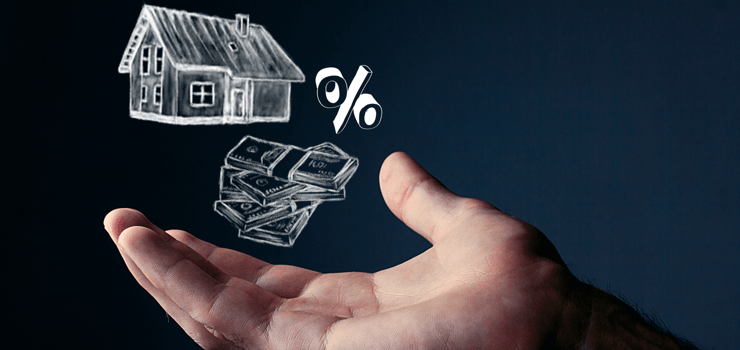 Once you've decided that it's time to buy a new home, you might want to start cutting costs as saving for a down payment becomes a priority. While budgeting and cutting costs will likely be a must to reach your savings goals, it's also important to arm yourself with as much knowledge as you can ahead of time. This way, you'll have a solid understanding of how down payments work, how much you'll want to save and what to expect during the process.
Once you've decided that it's time to buy a new home, you might want to start cutting costs as saving for a down payment becomes a priority. While budgeting and cutting costs will likely be a must to reach your savings goals, it's also important to arm yourself with as much knowledge as you can ahead of time. This way, you'll have a solid understanding of how down payments work, how much you'll want to save and what to expect during the process.
Here are a few things to think about when it comes to saving for your down payment:
 Open vs. Closed Mortgages
Open vs. Closed Mortgages
To better understand the requirements for your down payment savings, it's helpful to know whether you'll be applying for an open or closed mortgage and if you'll be paying a fixed or variable rate.
Open Mortgage
In an open mortgage, you are free to pay off more than your monthly payment at any time. If you suddenly come into some extra money, for example, you can opt to pay off a bigger part of your mortgage and substantially reduce the length of the term. However, since this is a little riskier for the banks, an open mortgage will probably have a higher monthly interest rate.
Closed Mortgage
A closed mortgage works the opposite way - your monthly interest payments will be lower, but if you opt to pay off a large chunk of the mortgage all at once you could face a penalty.
Fixed-Rate Payments
A fixed-rate mortgage is one in which the monthly payments are set from the beginning for the full term of the mortgage. These are more suitable for people who like to plan ahead, or who just want the peace of mind of knowing exactly how much they'll be paying every month.
Variable-Rate Payments
A variable-rate mortgage will have payments that go up or down according to the market. Fluctuations can take the form of different sized monthly payments or, if you so choose, the same monthly payments but a different amount taken off the principal of the loan. While historically people paying variable rates have saved money in the long-term, this is by no means guaranteed.
Other Expenses
The 5% down payment rule is just the beginning. You'll also need to pay for a variety of closing costs that average between 1.5 and 4% of the sales price. Therefore, aim to save roughly 24% of the sale price for your initial upfront costs (that includes the down payment).
Below is a list of some of the other expenses you should consider when buying a new home:
- Mortgage insurance
- Home inspection fee
- Land transfer tax
- Legal fees
- Appraisal fee
- Property insurance
- Prepaid utility costs
- Prepaid property taxes
Keep in mind that when you purchase a new home in Alberta, it will come with a new home warranty - so you can rest assured knowing you won't have to pay for repairs, maintenance or upkeep for a long time.
 What Can Affect The Amount I Have To Put Down?
What Can Affect The Amount I Have To Put Down?
One of the biggest obstacles in buying a new home is the down payment. Few people are able to save thousands of dollars per month to put towards a new home - especially a full 20%. So how do you know exactly how much you should save? Here are some things to consider to help you get a better idea:
Your Credit Score
A credit score essentially shows how well you have borrowed money and paid it back over the years. There are some people who wrongly assume they have a high credit score. Once they apply for a loan, they realize their credit score is much lower. A low credit score requires buyers to put down more money for the home. In addition, the interest rate on the loan is usually higher.
Improving your credit score is simple, but it does take some time to see the changes. The best way to improve a score is to borrow money and pay it back on time. There are many people who will apply for different lines of credit and keep them paid. This is a great way to increase your score. Understanding your credit score before applying for a loan will prevent any surprises in this area.
Down Payment Options
If you're buying a typical home that costs less than $500,000, the math behind a down payment is simple. For example, if a buyer purchases a property for $300,000, the down payment will have to be $15,000 or more (5% of $300,000). Few people have that much money in the bank at any point in time and it may take a little while to save. During this time, it's a great idea to do research on the local housing market. Once you do have your down payment ready, you will know what's considered a deal in your area and price range.
If the home costs more than $500,000, the math becomes a little more complicated. The required down payment is still five per cent on the first $500,000. However, anything above that point requires a ten per cent down payment. If a person buys a home for $600,000, the required down payment will be $35,000 (5% of $500,000 and 10% of $100,000). Buyers need to take this into consideration if they want to buy a higher priced home.
Mortgage Loan Insurance
Mortgage loan insurance is essentially a fee that buyers have to pay when using a down payment of 20 per cent or less. This is the difference between conventional and high-ratio mortgages.
For any loans taken out with less than 20 per cent down, this fee will be added onto the monthly loan payment (this fee is there to help the bank in case of default). The good news is, the monthly fee is only a few hundred dollars depending on the size of the loan. The more a buyer can put down, the less this payment will be and a 20 per cent down payment will remove this insurance altogether.
Saving Up
The easiest way to save for your down payment is to make a time plan. Calculate how much you think you can save in an entire year and then make that the foundation for your decisions.
If your dream home costs $400,000 then your ideal down payment will be $20,000 plus an additional 4% ($16,000) in upfront costs for a total of around $36,000. Divide this into monthly allotments and you can see that you'll have to put aside $3,000 a month in order to save $36,000 in a single year.
If like most home buyers your monthly savings goals are more modest, you may have to extend the total time period needed to save for your down payment. Having a working budget is a great way to allocate your resources in the best manner and stay on top of tracking your spending so can you reliably continue to save for your new home.
Look Into Your Options
The good news is you can draw upon a variety of different resources in order to save for your down payment. Here is a list of some of the most effective ways to save.
1. Crunch the Numbers
How much do you make in a year? Where is your money coming and going? How much would you need to save to afford a down payment in three months, six months, or nine months? Look at both your annual gross income and your monthly cost of living. The latter will need to be slashed to make room for home-buying costs.
If you have cable, cut it off and live on streaming services for a while. If you're an avid reader, start haunting the library instead of the bookstore. Little changes like this can result in big savings down the line, so don't underestimate the impact of your everyday spending habits. You might even find that you enjoy the feeling of being thrifty.
2. Personal Savings
You'll earn interest on any cash you store in a savings account, and while it might not be a lot, it's still money that can be applied to your down payment. You can even look into special tax-free savings accounts where you won't be charged by the government for growing your funds.
3. The Home Buyers' Plan
With the Home Buyer's Plan, first-time buyers can withdraw up to $25,000 from their RRSP with no penalty. Add in a spouse or common-law partner (who is also a first-time buyer) and you can borrow up to $50,000.
Remember that you'll need to start making payments on this loan beginning two years after the purchase of your new home (you'll have 15 years to complete the payments).
4. Look For a Different Mortgage
Conventional mortgages usually require a down payment that's around 20 percent of your total property costs. If you qualify for an insured mortgage, however, your down payment can dwindle to as little as five percent. You'll need to talk to the professionals to learn more, but it's something to mull over.
 5. Settle Your Debts
5. Settle Your Debts
If you owe any money to banks or credit card companies, you should pay them off before embarking on another big financial journey. Not only will it bring you peace of mind to finally settle the score, but you'll also qualify for more generous home loans without outstanding debts looming over your credit history.
6. Look for Tax Credits
There are things like the First-Time Home Buyers Tax Credit that can soothe some of the sting of your down payment. While they won't cover all of it, they can be useful gains in a long-term savings plan.
7. Reconsider Your Transportation
Getting rid of your car will also get rid of its need for gas money, maintenance money, and insurance money. You can still take the bus or ride a bike to work so you won't suffer anything more than a minor disruption to your routine. If you don't mind your co-worker singing along with the radio, you might even carpool!
8. Sell Your Belongings
This serves the dual purpose of putting more money in the bank while also cleaning out your closets in preparation for your move. The more you're willing to sell, the more cash you can dedicate to your down payment. Think less about minor things like clothes and toys and more about big-ticket items such as televisions, kitchen appliances, and electronic gadgets.
Saving money isn't easy, but it'll be worth the effort when you first walk through the doors of your brand-new home. Use these tips to make tightening the purse strings a little easier as you daydream about a brighter future. Remember, a careful plan and budgeting are the best ways to make sure that you can live in and safely afford the home of your dreams.
Originally posted November 9, 2017, updated November 6, 2018.





